Cabinet Custom upright Initial release date 1980 | Composer(s) Hal CanonEarl Vickers Arcade system Atari System 2 | |
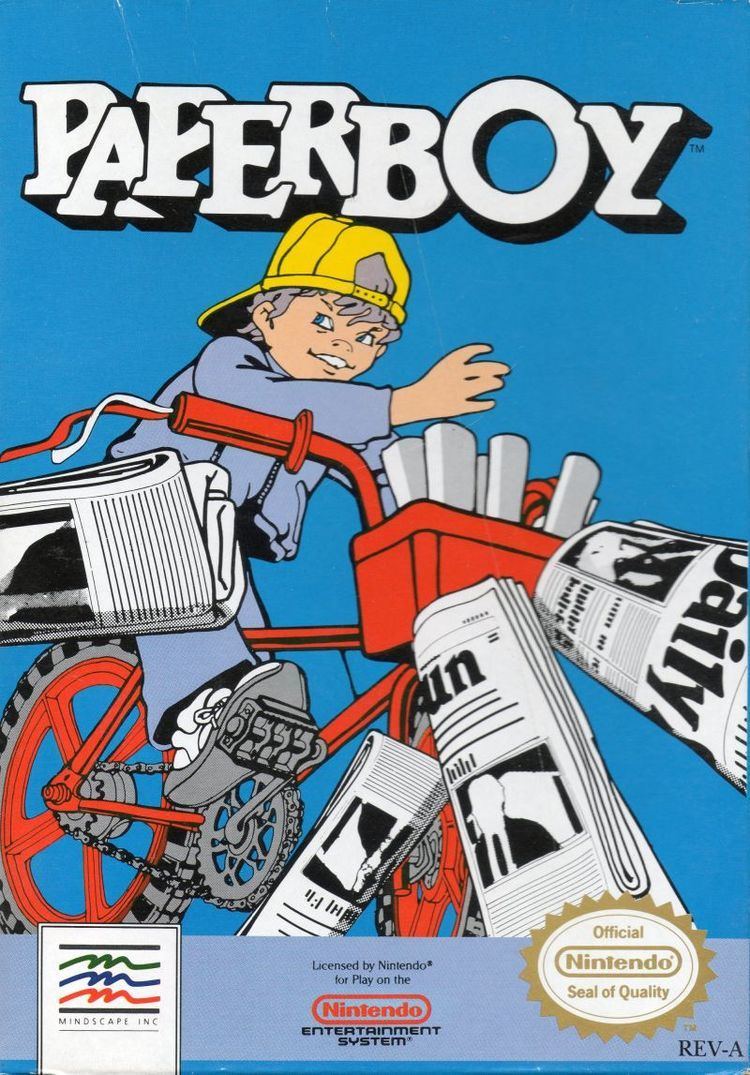 | ||
Designer(s) Keith Furey (lead)EoinCarl BedardJohn SalwitzDave RalstonRussel Dawe Mode(s) Single player, 2 players alternating turns Similar Atari games, Racing video games | ||
Paperboy is a 1985 arcade game developed and published by Atari Games. The player takes the role of a paperboy who delivers a fictional newspaper called "The Daily Sun" along a suburban street on his bicycle. The game was ported to a wide range of video game consoles and personal computers. The Nintendo Entertainment System version is the first NES game developed in the United States, and the Sega Master System version represented the first SMS game developed in the United Kingdom. Paperboy is notable for its unusual theme, which extends to using bike handlebars as the controller.
Contents

A sequel for home computers and consoles, Paperboy 2, was released in 1991-2.
Gameplay

The player controls a paperboy on a bicycle delivering newspapers along a suburban street which is displayed in a cabinet perspective (or oblique projection) view. The player attempts to deliver a week of daily newspapers to subscribing customers, attempts to vandalize non-subscribers' homes and must avoid hazards along the street. Subscribers are lost by missing a delivery or damaging a subscriber's house.
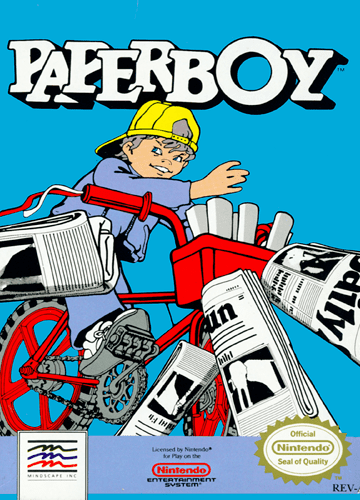
The game begins with a choice of difficulty levels: Easy Street, Middle Road and Hard Way. The object of the game is to perfectly deliver papers to subscribers for an entire week and avoid crashing (which counts as one of the player's lives) before the week ends. The game lasts for seven in-game days, Monday through Sunday.
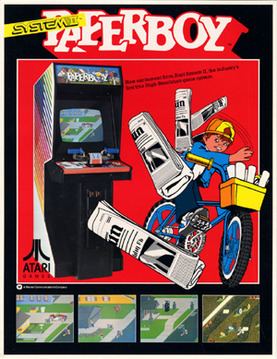
Controlling the paperboy with the handlebar controls, the player attempts to deliver newspapers to subscribers. Each day begins by showing an overview of the street indicating subscribers and non-subscribers. Subscribers and non-subscribers' homes are also easy to discern in the level itself, with subscribers living in brightly colored houses, and non-subscribers living in dark houses.
Hardware
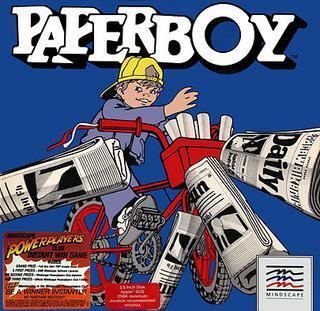
The cabinet of this game is a standard upright but with custom controls. The controls consist of a bicycle handlebar (a modified Star Wars yoke) with one button on each side, used to throw papers. The handlebars can be pushed forward to accelerate, and pulled back to brake.
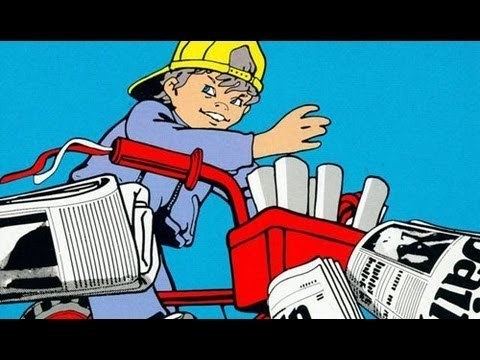
The game runs on the Atari System 2 hardware. The CPU is a 10 MHz Digital Equipment Corporation (DEC) T-11. For sound and coin inputs, it uses a 2.2 MHz MOS Technology 6502. The sound chips are two POKEYs for digital sound, a Yamaha YM2151 for music, and a Texas Instruments TMS5220 for speech. The protection chip is a Slapstic model 137412-105.
Ports and re-releases
Paperboy was ported to consoles and home computers, starting in 1986. In some of these versions, the player could assume the role of a papergirl instead of a paperboy.<<cn|date=February 2017}} Paperboy was ported to the BBC Micro and Acorn Electron (by Andy Williams, 1986), Commodore 64 (by Chris Harvey, Neil A Bate and Jon Harrison 1986), Commodore 16 (1986), Amstrad CPC (1986), ZX Spectrum (1986), Apple II (1986), TRS-80 Color Computer (1986), MS-DOS (1988), Apple IIGS (1988), NES/Famicom (1988) (1991, Japan), Game Boy (1990), Game Boy Color (1999), Atari ST (1989), Amiga (1989), Atari Lynx (1990), Sega Master System (1990), Game Gear (1991), and Sega Mega Drive/Genesis (1991) (1992, Japan). The NES version is particularly notable for being the first NES game developed in the United States.
Unlike the arcade version, several of these versions inspired a sequel, Paperboy 2 for several home systems (Amiga, Amstrad CPC, Atari ST, MS-DOS, Game Boy, Game Gear, Sega Genesis, NES, SNES, ZX Spectrum), and a 3D version for the Nintendo 64 called Paperboy 64.
Paperboy was included in Midway Arcade Treasures, a compilation of arcade games for the Nintendo GameCube, PlayStation 2, PlayStation Portable, Xbox, and Windows released in 2003.
A mobile version of Paperboy was released in 2005.
Paperboy was also released on February 14, 2007 on Xbox Live Arcade for the Xbox 360; however, the game was delisted.
An iPhone/iPod Touch 25th anniversary version of Paperboy was released December 18, 2009.
A port of the game can be accessed in Lego Dimensions by using the Arcade Dock in the level "Painting the Town Black".
Reception
Crash magazine gave the Sinclair ZX Spectrum version an 88% rating with the general rating "Another slick, playable conversion from Elite ", while Zzap!64 was less enthusiastic for the Commodore 64 version giving it 44%. The One gave the Amiga version 80% stating that "it's an almost flawless conversion". In England, Richard Leadbetter of Computer and Video Games magazine reviewed the Atari Lynx version giving a score of 67% stating "Looks good, but simply isn't enough fun to play." TeamXbox gave the Xbox version an overall score of 8.2, stating that "Paperboy “delivers” as advertised in the classifieds."
Legacy
Along with Hyper Sports, Paperboy formed one of the computer game rounds in a children's television quiz, "First Class", shown on BBC Television in the 1980s.
The paperboy makes a cameo appearance in the Disney animated film Wreck-It Ralph. He can be seen at Game Central Station.
